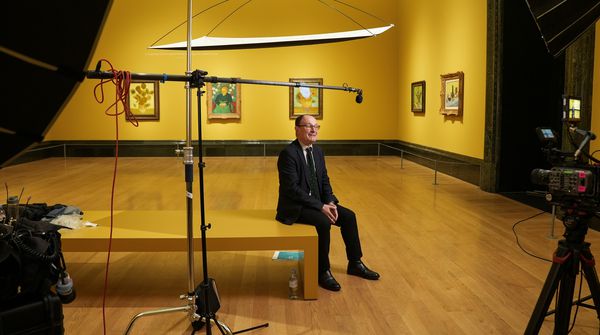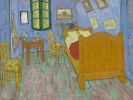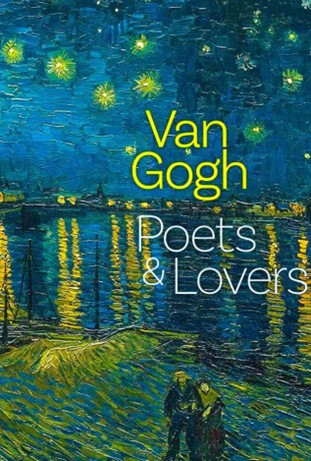Eye For Film >> Movies >> Van Gogh: Poets & Lovers (2024) Film Review
Van Gogh: Poets & Lovers
Reviewed by: Jennie Kermode

Three years on from its gorgeous treatment of his Sunflowers, Exhibition On Screen returns to Vincent Van Gogh to celebrate the work he produced during his two year sojourn in the south of France. It does so by way of a presentation by the National Gallery in London, which we are walked through step by step in spacious rooms whose walls have been painted to complement the art. ordinarily these would be packed full of people but, as on previous occasions, visiting them through the medium of film allows us to appreciate them as the curators intended, moving in close to take in the details, drawing back to take in the full impact of his experiments in colour.
Anyone familiar with the artist’s work will appreciate that this was a tremendously experimental period for him. Throughout the film there are references to his friendship and rivalry with Paul Gaugin, whose work we also get glimpses of in parallel, and filmmaker David Bickerstaff uses this framework to show how he broke away and found a voice that was distinctly his own, an array of techniques that left his former peers in the dust. This wasn’t all about innovation – there is a lot of focus on his enthusiasm for Japanese art, a popular craze of the time, and it’s clear how it influenced his framing and brushstrokes. Alongside the paintings there’s a fine collection of drawings like View Of La Crau From Montmajour and Trees, Montmajour, made using Japanese reed pens. These are strikingly modern in style and their curious flatness, so unlike the rest of his work, is counterbalanced by marvellous detail and a deeply embodied impression of his affection for the material.

Why poets, why lovers? This is not about any romantic life of his own; that was, as is briefly explained, limited to his weekly outings to the brothel in Arles. We see his yellow house, however, and through his work we visit the little park one situated opposite it, a humble place but one reimagined in paintings like The Poet’s Garden. There are a number of these, often inhabited by pairs of lovers, and we see these figures also in the beguiling Starry Night Over The Rhône – a painting which was done from life, by lamplight, unlike the more famous Starry Night, a work of the imagination.
His own thoughts are in evidence thanks to his many letters to his brother Theo, in which he captured both his artistic passions and the minutiae of his days. Thus we learn about his admiration for the Japanese notion of seeking understanding by dedicating one’s life to a single, simple thing until one can do it perfectly. It’s a sentiment reflected in his still lifes – perhaps most notably Iris, but also the Sunflowers series, two parts of which appear here as we hear him discourse on his love of the brightly coloured plants, his longing to bring joy into daily life by way of them. There is tragedy here, inevitably, as he writes also of his stays in the hospital at St Rémy, the frightening breakdowns which he couldn’t remember, but even in the hospital he was painting, and his scenes of wards and gardens capture his developing technique at the same time as providing us with a visual record of the place.
Looking at some of these paintings, and reflecting on the changes of technique around the periods when his illness was most intense, one cannot help but wonder if Van Gogh simply saw the world differently from other people – if he took in visual information more intensely, to the point where it was sometimes overwhelming. Here we learn about his fascination with the developing science of colour contrast, his consequent pairing of colours and the liveliness to be found in his paintings as a result. A close analysis of strokes reveals the order in which he added some of them and the speed with which he moved across a canvas, translating his visions into something external, something that could last when he could not. Bickerstaff’s film will leave you with the feeling that the rest of us are yet to catch up.
Reviewed on: 06 Nov 2024















